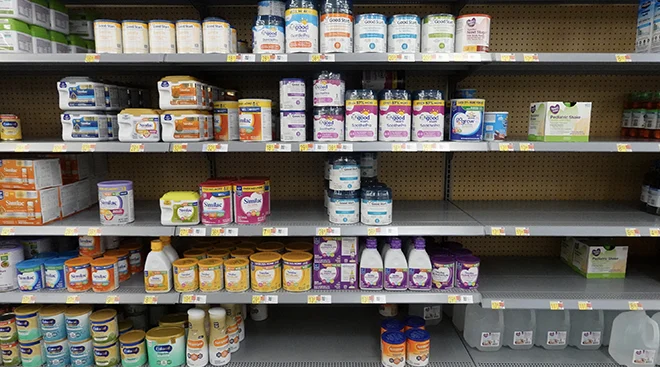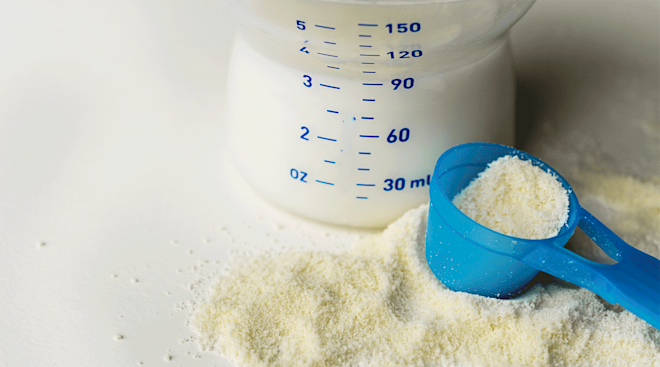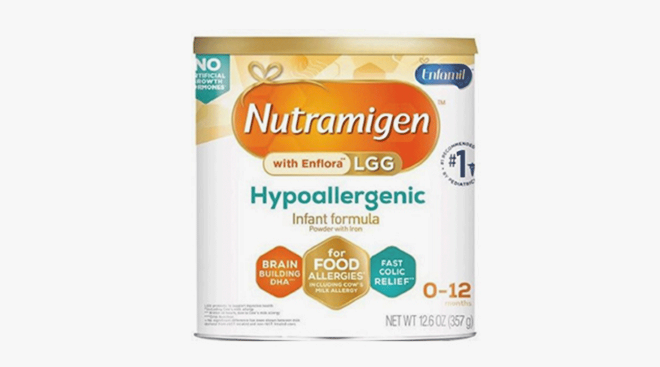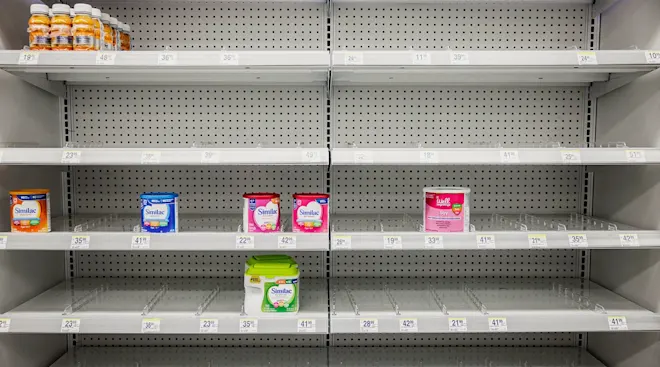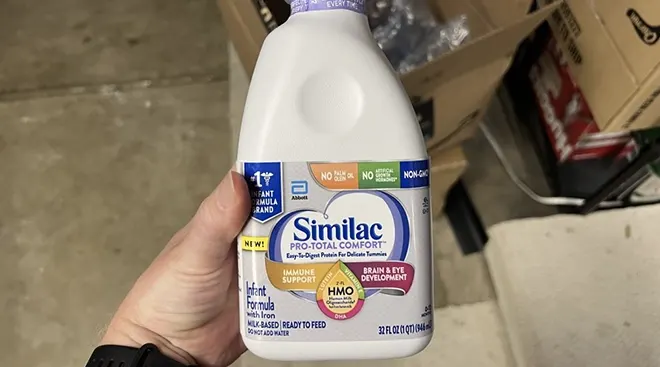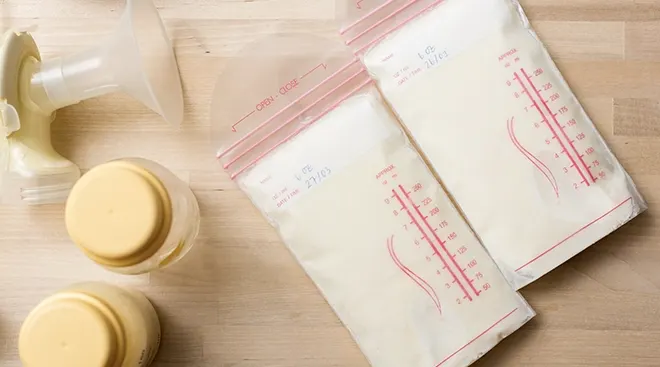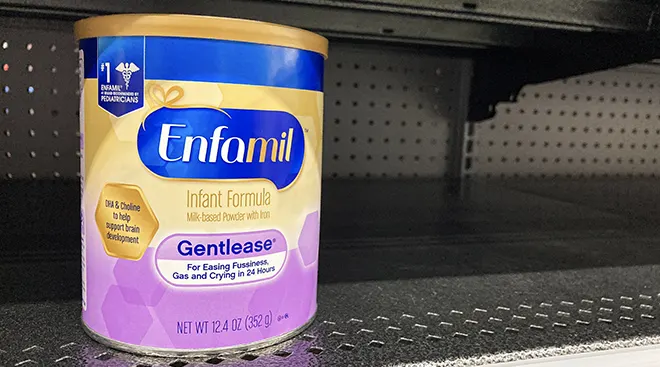Parents Are Facing a Baby Formula Shortage: Here's What You Can Do
Since the COVID-19 pandemic, there has been an infant formula shortage in the United States due to supply chain issues with certain formula ingredients and packaging. More recently, the FDA also investigated consumer complaints of bacterial infections in infants who consumed powdered infant formula produced in Abbott Nutrition’s facility in Michigan. (Abbott Nutrition is the parent company behind brands like Similac, Pedialyte, Pediasure and more). As a result of the investigation, Abbott voluntarily recalled lots of their infant formulas from Similac, Alimentum, EleCare and PM 60/40, causing even more of an infant formula shortage.
While these are stressful times for new parents, don’t lose hope. There are still ways to navigate this shortage and provide your child with the nutrition they need. Here, a few tips for what to do if you’re having trouble finding your formula of choice:
1. Consider Switching to a Different Type of Formula
Most healthy, full-term infants will do well with a cow’s milk–based formula. The good news is that there are many major and boutique brands available for this type of formula. Examples of cow’s milk-based formula include Enfamil Neuropro or Enspire, Earth’s Best Organic Infant Formula, Bobbie, Plum Organic or the store-brand equivalent.
If you do consider switching, discuss with your pediatrician first. Some babies are switched from a cow’s milk-based formulas to a soy-based, partially hydrolyzed protein, extensively hydrolyzed protein or amino acid-based formulas due to fussiness, gassiness or spitting up. There are also specific medical conditions that require a baby to be on a non-cow’s milk-based formula, such as a cow’s milk protein allergy, milk allergy or metabolic conditions such as galactosemia (which affects how the body processes simple sugars).
If there is no medical reason for baby to be on a formula that is not cow’s milk-based, speak to your pediatrician about switching to a cow’s milk-based formula that may be more readily available.
2. Consider Switching to a Different Form of Formula
Formulas come in three different forms: powder, concentrated and ready-to-feed. If you’re currently using a ready-to-feed formula and can’t find it, consider switching to powdered formula or concentrated formula (or vice versa). In most cases, when using powdered formula, you would first place two ounces of water in the bottle, then add one level scoop of powdered formula to the bottle and shake well. It’s important to read the labels, though, as some formulas, including some amino acid-based formulas such as Neocate and PurAmino, need to be mixed at a different ratio, with one ounce of water for every one scoop of formula.
Powdered formula, however, is not as sterile as ready-to-feed formulas. If you have a newborn baby under 3 months old, a baby who is immune-compromised or premature, discuss with your pediatrician if you should be using powdered formula and whether you need to boil water during its preparation to protect against bacterial contamination.
Concentrate formulas should be mixed at a one-to-one ratio with water. Ready-to-feed formula is exactly what it sounds like—the formula should not be diluted with additional water and is ready to use straight from the bottle.
3. Try a Different Brand of Formula
The US Infant Formula Act is one of the most detailed Acts of Congress and sets safety and nutritional standards for all FDA-reviewed formulas. Therefore, if you are currently feeding baby a brand-name cow’s milk-based formula, it’s likely fine to switch to a different manufacturer of the same type of formula or even the generic store brand version of the same formula. There are over 50 store brand versions available that all provide similar safety, quality and nutritional content. In addition, store brand versions often cost one-third the price of the national brand equivalents.
4. Switch Up Where You Buy Your Formula
Many parents often buy their formula from big box stores, but try looking for your usual formula at local pharmacies, smaller mom-and-pop shops or online at major retailers. Parents can also try going to the formula’s manufacturer website, which will often have a search function to find a local retailer selling that specific formula.
5. Ask Your Pediatrician for a Sample
Often your pediatrician will have formula cans on hand that were given to them from local formula representatives.They can provide you with a few cans of formula (for free!) to tide you over until you can purchase more formula.
6. Use a Toddler Formula Alternative (Only for a Few Days)
According to the American Academy of Pediatrics (AAP), a toddler formula can also be given to babies who are close to a year old for a few short days as a last resort until an infant formula is again found. It’s important to stress, this advice is only applicable for babies who are almost toddlers and parents should consult their pediatricians before giving their child a toddler formula.
The infant formula shortage has caused many parents to scramble to find a way to feed their child, and the situation has become far from ideal. Rest assured, there are ways to navigate the shortage and ensure baby is getting their nutrition. For any specific questions or concerns and beforing making a switch in formula, always be sure to reach out to your pediatrician.
About the experts:
Dina DiMaggio, MD, and Anthony F. Porto, MD, MPH, are official spokespeople for the American Academy of Pediatrics and the co-authors of The Pediatrician’s Guide to Feeding Babies and Toddlers. They write about the latest AAP guidelines, studies and seasonal issues affecting babies and toddlers. Follow them on Instagram @pediatriciansguide.*
Please note: The Bump and the materials and information it contains are not intended to, and do not constitute, medical or other health advice or diagnosis and should not be used as such. You should always consult with a qualified physician or health professional about your specific circumstances.
Navigate forward to interact with the calendar and select a date. Press the question mark key to get the keyboard shortcuts for changing dates.
































